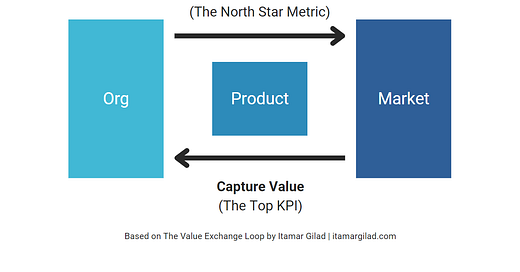Hey, Paweł here. Welcome to the subscriber-only edition of The Product Compass!
Every Saturday, I share actionable tips and resources for PMs.
Here’s what you might have missed:
Premium: The Ultimate Validation Experiments Library (32)
Premium: The Product Frameworks Compendium (35)
I realized I shouldn’t mix two topics in one post. So, I will publish an open Skills Assessment for PMs tomorrow. To prepare, consider studying posts related to Data Analytics and Experimentation and check our previous Competence Map + Skills Assessment.
From Goals to Ideas: Do Not Confuse Customer Research With Product Discovery
I have no doubt that business value stems from the value we create for others. And I’m a fan of Continuous Discovery Habits by Teresa Torres.
In my previous posts on Continuous Product Discovery, I explained that most of our ideas do not work. That’s why, for an existing product, the Product Trio:
Starts with the product goal (product outcome).
Interviews customers to identify opportunities (customer needs/problems) that, when solved, will drive the expected outcome.
Prioritizes important opportunities for which customers are not satisfied with the current solutions (Opportunity Score formula).
Ideates on how to solve those problems.
Identifies assumptions related to value, usability, viability, feasibility, and ethics (one way is by using the User Story Map).
Tests high-risk assumptions through experimentation.
At the same time, Teresa Torres, like many other User Researchers and Designers, focuses virtually only on customer interviews. I believe that this approach is incomplete.
That’s why in the Continuous Product Discovery Masterclass, I suggested that as a part of creating an Opportunity Solution Tree, we should also:
Leverage Product Analytics. They tell you what customers are doing across their customer journey. Interviewing customers will tell you WHY they are doing it.
Interview Sales, Success, Customer Support, and Founders. They spend hundreds or thousands of hours with our customers every month.
Use sources other than interviews, like surveys and market research.
Reviewing the last test assignment for premium subscribers, I realized that some assume this framework is the only valid approach.
Let me state this clearly:
While I do believe Opportunity Solution Tree is the primary way the core product teams work, it’s not the only way to come up with ideas.
What matters most is that we:
Come up with ideas related to the product goal.
Identify assumptions that need to be true for those ideas to work.
Test high-risk assumptions before implementation.
So that our Product Discovery results in a validated Product Backlog.
Why you might need to act differently?
And what are the other sources of ideas?
Keep reading with a 7-day free trial
Subscribe to The Product Compass to keep reading this post and get 7 days of free access to the full post archives.



